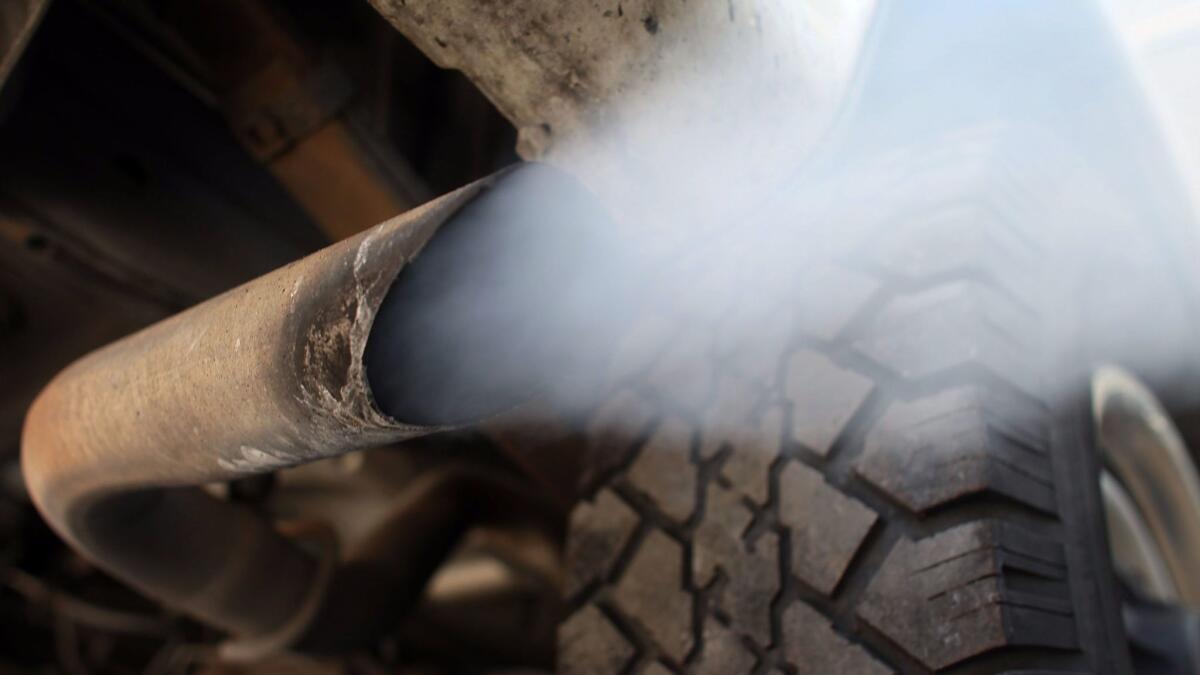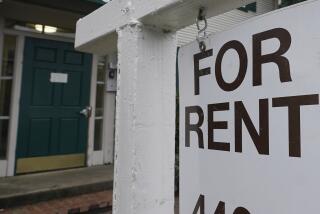Q&A: When a board won’t fix a code violation, filing a city complaint is an option

Question: I live in a mixed-use condominium complex in Los Angeles. There is only one subterranean parking garage for the entire building, and over time, serious problems have developed with exhaust fumes. There does not seem to be adequate air flow or proper ventilation in the garage.
My concern is that the concentration of toxic fumes and particulates in the air may be affecting my health. The garage has not been altered since the complex was built 39 years ago and there are lots of spaces for guests, residents and delivery trucks. The board blames idling vehicles for the toxic fumes, but idling engines only seem to be part of the problem.
I monitored the structure during major holidays when the majority of residents were away for long periods of time and the exhaust fumes were still noticeable. Even with just a few cars entering and exiting, exhaust fumes wafted into the building lobby and courtyard, traveled up stairwells and stagnated in the elevators.
What can we do? It seems obvious the ventilation system needs to either be fixed or replaced.
Answer: Toxic fumes are a public safety issue. When your complex was built the developer was required to meet certain building and safety requirements, which are enforced through plan checks, permits and approvals by city inspectors — including on site — before the project can be occupied. Part of that process includes providing sufficient ventilation for the underground parking structure.
According to the Department of Building and Safety, the protocol for reporting problems like this in the city of Los Angeles is to file a formal “code violation” complaint by phone. You are not required, nor are you expected, to know the specific code violation statute number or rule that was violated at the time of your call. You merely have to claim that a “code violation” has occurred and the city will investigate.
The simplest way to file the complaint in Los Angeles is by using the “311” phone number. Once the complaint is filed you are provided with a confirmation number, and after 20 days you can call 311 again to get a status update on your complaint. Prior to inspecting the structure, a city inspector can access the initial development plans, permits and approvals.
If you are unhappy with the response, you can contact your local City Council member and ask him or her to make inquiries into the case.
Question: Our Los Angeles condo development has a single surface parking lot, and over the years residents have increasingly complained that there are not enough spaces. The board’s solution is to repave the parking lot and redraw the stripes, creating narrower spaces.
The board reasons that once they redraw the lines the association should gain roughly 10 to 15 additional parking spaces. Not everyone has a compact car. How do owners stop this project?
Answer: At first glance, this appears to be a simple internal issue that can be rectified by garnering enough support from fellow owners to persuade the board to change its mind. However, the decision to change the number of spaces in the parking lot may not be completely within the board’s authority.
Each development has its own permit requirements, such as for a certain ratio of compact-car spaces to full-sized car spaces. Although redrawing the parking stripes would increase the number of available spaces, those original parking stripes were not drawn arbitrarily. Your association cannot simply reconfigure and repaint those lines without a permit and inspection from the city.
Again, the same complaint protocol exists for parking lot spaces as for the problems with ventilation of the subterranean garage. The Los Angeles “311” phone number is the official intake for all code violation complaints.
The complaint should generate a visit to your facility by a city inspector who will assess the situation and inform the management or board if the stripes can be altered without violating the code. The inspector will also explain the process your association will have to follow to proceed with altering the stripes, if in fact it is legal.
Zachary Levine, a partner at Wolk & Levine, a business and intellectual property law firm, co-wrote this column. Vanitzian is an arbitrator and mediator. Send questions to Donie Vanitzian, JD, P.O. Box 10490, Marina del Rey, CA 90295 or noexit@mindspring.com.
More to Read
Inside the business of entertainment
The Wide Shot brings you news, analysis and insights on everything from streaming wars to production — and what it all means for the future.
You may occasionally receive promotional content from the Los Angeles Times.










